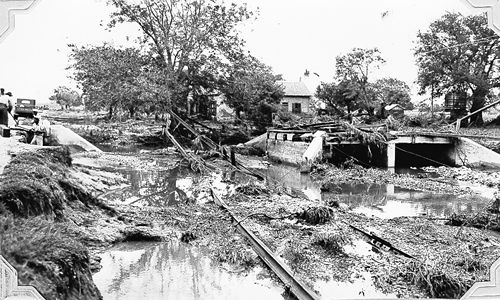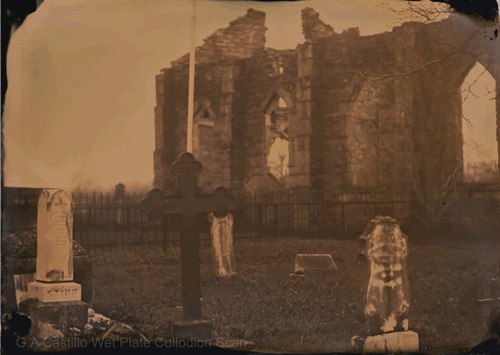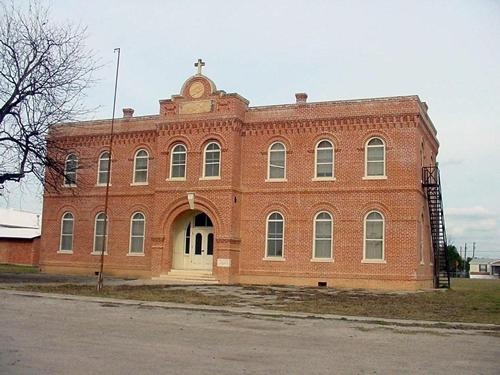D'Hanis Texas and Old D'Hanis Texas. (original) (raw)

Old D'Hanis St. Dominic Catholic Church
Photo courtesy Barclay Gibson, February 2005
The old D�Hanis Cemetery and the ruins of St. Dominic Church are worthy of a stop for anyone traveling US 90. They are just east of the high school, a quarter of a mile south of highway 90.
History in a Pecan Shell
Also known as New D'Hanis, the designation doesn�t mean as much to travelers as it does to local residents. �Old� D�Hanis which is just over a mile east of what travelers today regard as D�Hanis. The colony was Henri Castro�s third settlement in Texas and was named to honor his European agent, William D'Hanis.
When it was formed in 1847, twenty-nine Alsatian families formed the nucleus of the town. Each family was given a twenty-acre farm and a town lot. In 1850 the entire town was a mere twenty buildings and when compared to safe and secure Castroville, D�Hanis was a primitive and crude outpost. Two years after the settlers arrived, Fort Lincoln was established to protect them from frequent Indian raids. Several tombstones in the old cemetery testify to the violence.
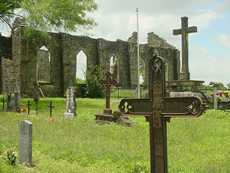 |
The ruins showing the Old D'Hanis Cemetery and the northern wall of St. Dominic Church Photo by John Troesser, May 2004 |
|---|
A post office was granted in 1854. The town became a stage stop along the San Antonio-Rio Grande road and St. Dominic Church was formed in 1847. The church building was abandoned in 1914 when the congregation moved to New D�Hanis. The sandstone arches that form the ruin seen today are from the original construction of 1853. Other stones are from an 1869 extension.
The Galveston, Harrisburg and San Antonio Railway built through Medina County in 1881 and bypassed the town creating �New� D�Hanis (a mile and a fraction west) in the process.
D�Hanis endured floods in 1894, 1919, and 1935.
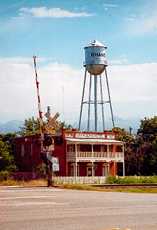 |
D'Hanis water tower and Koch Hotel across the tracks from Hwy 90 Photo by John Troesser, June 2003 |
|---|
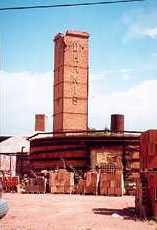 |
Brick kiln and chimney Photo by John Troesser, June 2003 |
|---|
The kilns of the D'Hanis Brick and Tile Company (founded 1883) are featured in T. Lindsay Baker�s excellent Building the Lone Star � a book on civil engineering marvels around Texas. Seco Pressed Brick, which opened in 1910, became D�Hanis� second brick manufacturing company.
D'Hanis had a weekly newspaper from 1908 until 1923.
Our Lady Queen of Peace, was built in 1924 for the town�s Mexican-American congregation.
The population of the town has never exceeded 600 people until the 2000s.
The townspeople stopped using the cemetery in 1893 due to a Diphtheria epidemic, but the old-world artistic inscriptions and the wrought-iron markers make the Old D'Hanis Cemetery one of the most interesting in Texas.
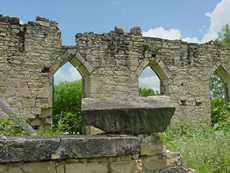 |
Northern wall wall of St. Dominic Church seen from the south Photo by John Troesser, May 2004 |
|---|
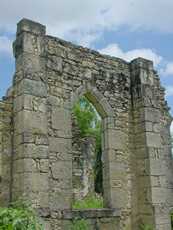 |
The ruined back arch Photo by John Troesser, May 2004 |
|---|
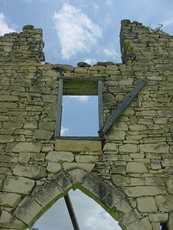 |
The upper front facade Photo by John Troesser, May 2004 |
|---|
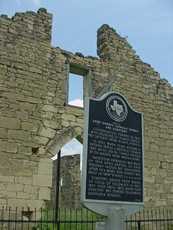 |
THC Marker in front of St. Dominic Church Photo by John Troesser, May 2004 |
|---|
Historical Marker on CR 5226 (Old Church Road) and CR 5221 (Old Cemetery Road)
Site of Saint Dominic Catholic Church and Cemetery
Congregation formed in 1847 with founding of D'Hanis Colony by settlers from Alsace, France. In 1853, when town became a mission parish, limestone church was built, using timber hauled by ox-wagon from Medina River. Sandstone extension was built in 1868 upon arrival of first resident pastor but abandoned after 1914 when new church was built in "New" D'Hanis (1 1/2 miles west). Cemetery, dating from burial of child of colonists in 1847, was used until 1893, when new cemetery was started following diptheria epidemic.
(1972)
Courtesy Gary Castillo, June 2016
Photographer's Note:
"The above two are scans of my wet plate collodion images. It's the way photos were made back in the 1860's. The beauty of wet plate is that the process makes a modern scene look old. The images above were made on glass, then scanned." - Gary Castillo, March 16. 2017
Texas Escapes, in its purpose to preserve historic, endangered and vanishing Texas, asks that anyone wishing to share their local history, stories, landmarks and recent or vintage photos, please contact us.
